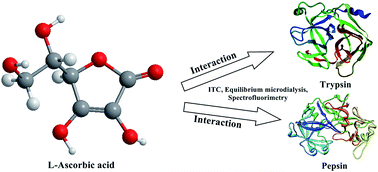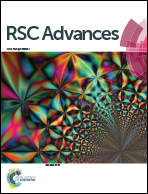Dissection of the binding of l-ascorbic acid to trypsin and pepsin using isothermal titration calorimetry, equilibrium microdialysis and spectrofluorimetry
Abstract
L-Ascorbic acid is an essential nutrient for a variety of biological functions. In this study, the binding of L-ascorbic acid to trypsin and pepsin was investigated using isothermal titration calorimetry (ITC) and equilibrium microdialysis in combination with spectrofluorimetry. Thermodynamic investigations reveal that the L-ascorbic acid binding to trypsin/pepsin is driven by favorable enthalpy and unfavorable entropy. The major driving forces come from the hydrogen bonds and van der Waals forces. ITC and equilibrium microdialysis experiments suggest that L-ascorbic acid binds to trypsin more firmly than to pepsin, and one molecule of L-ascorbic acid combines with one molecule of trypsin/pepsin. Fluorescence experiments suggest that L-ascorbic acid can quench the fluorescence of trypsin/pepsin through a static quenching mechanism. In addition, as shown by synchronous fluorescence spectroscopy, L-ascorbic acid may induce microenvironmental changes in trypsin and pepsin.


 Please wait while we load your content...
Please wait while we load your content...